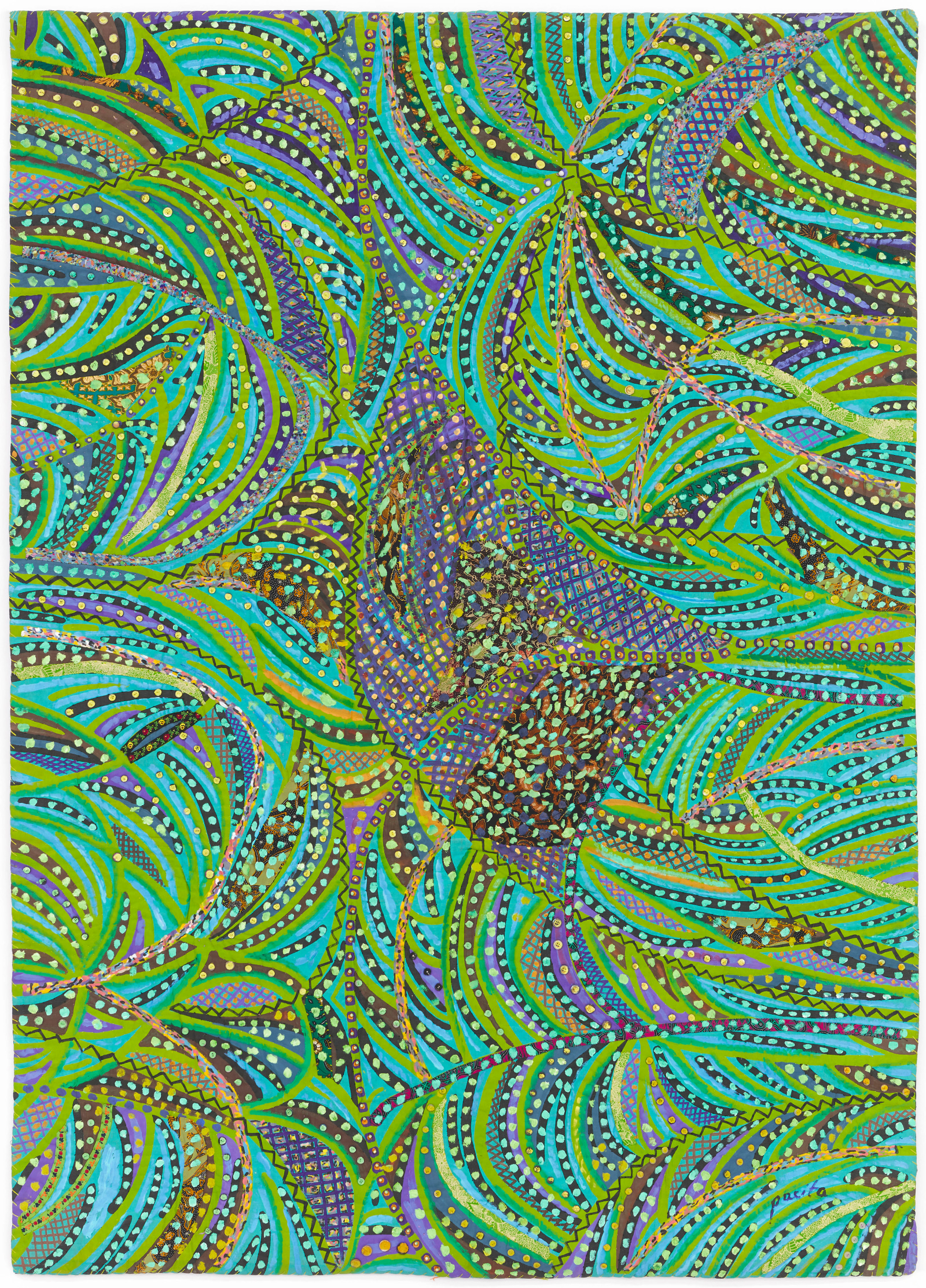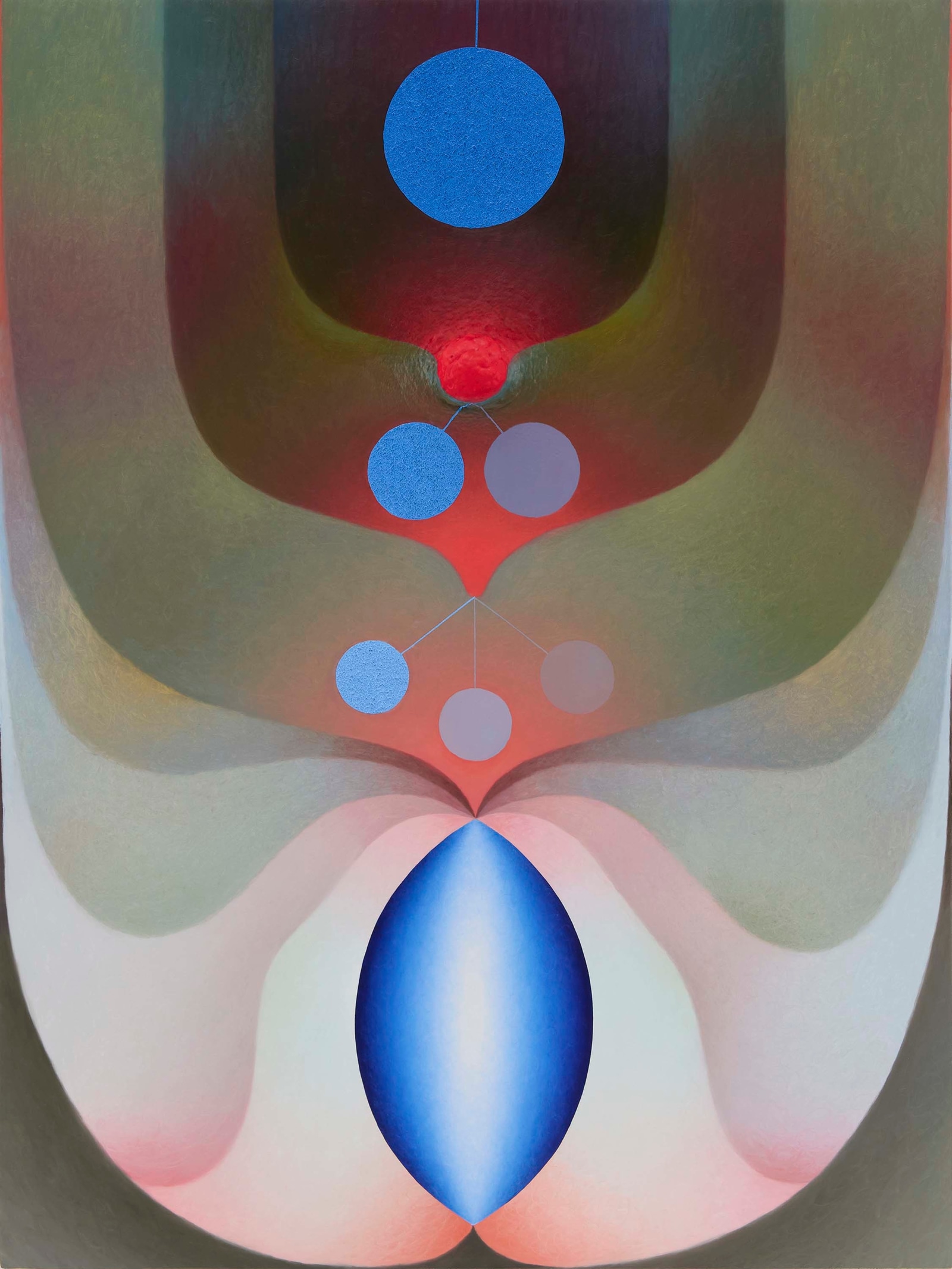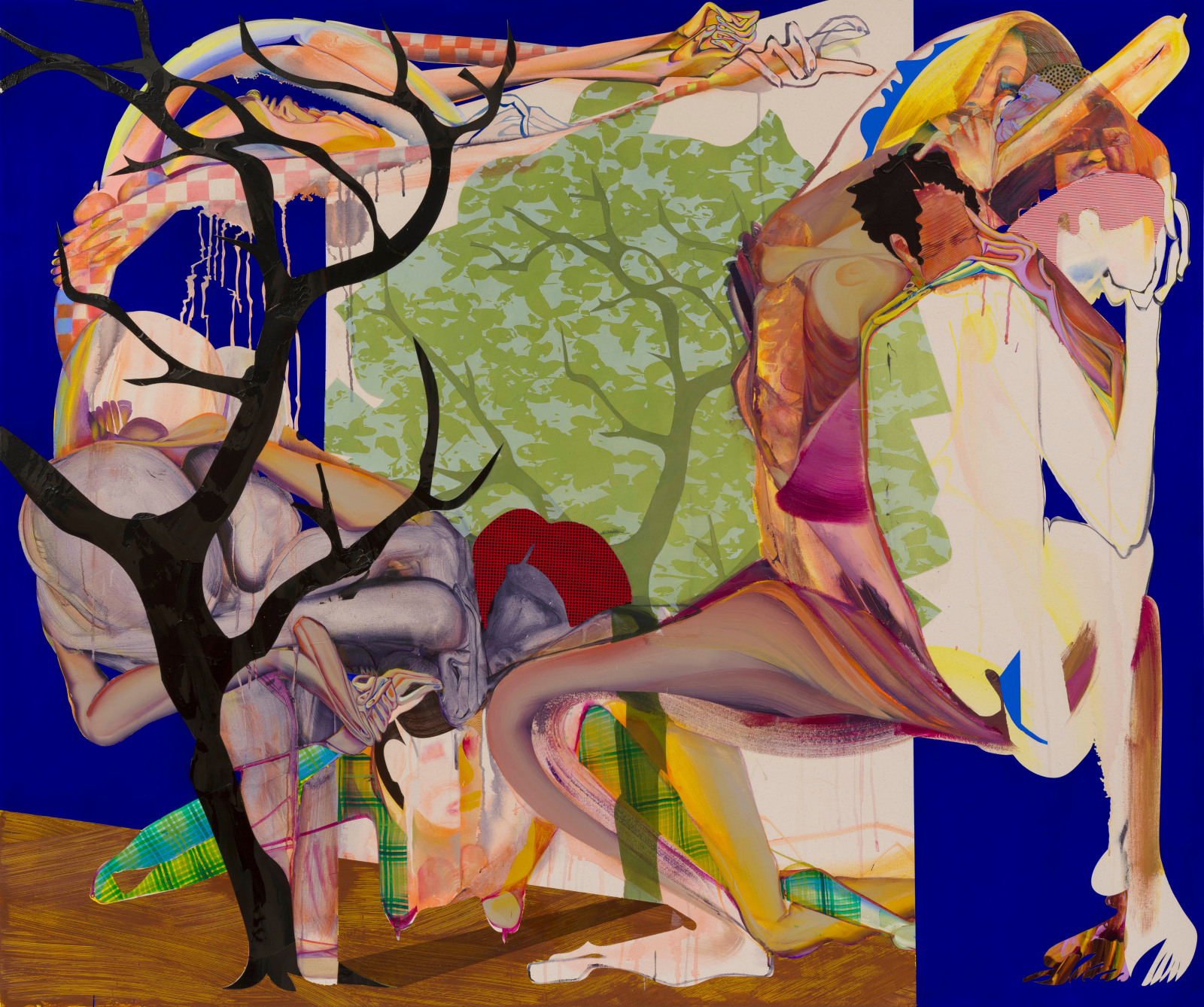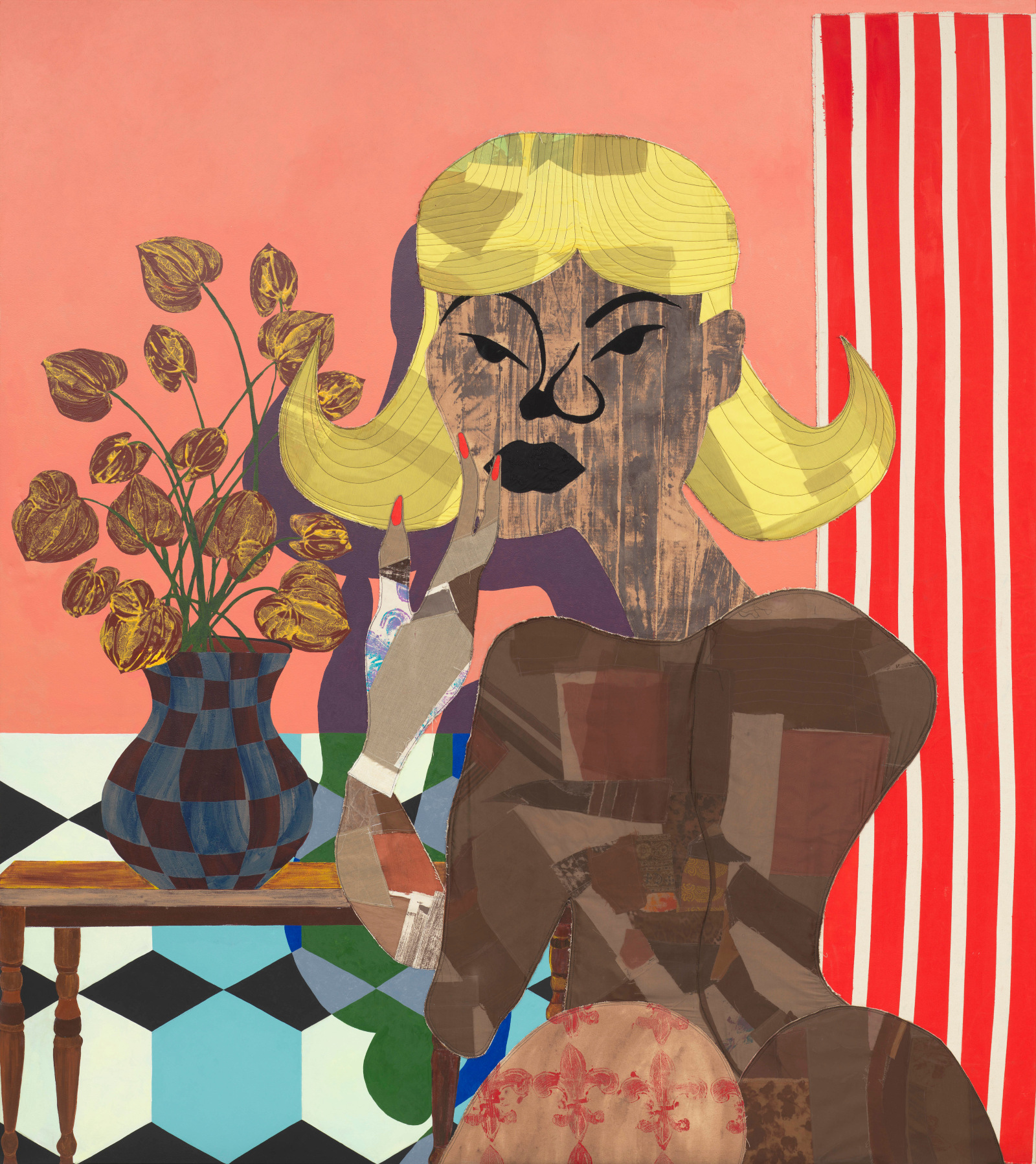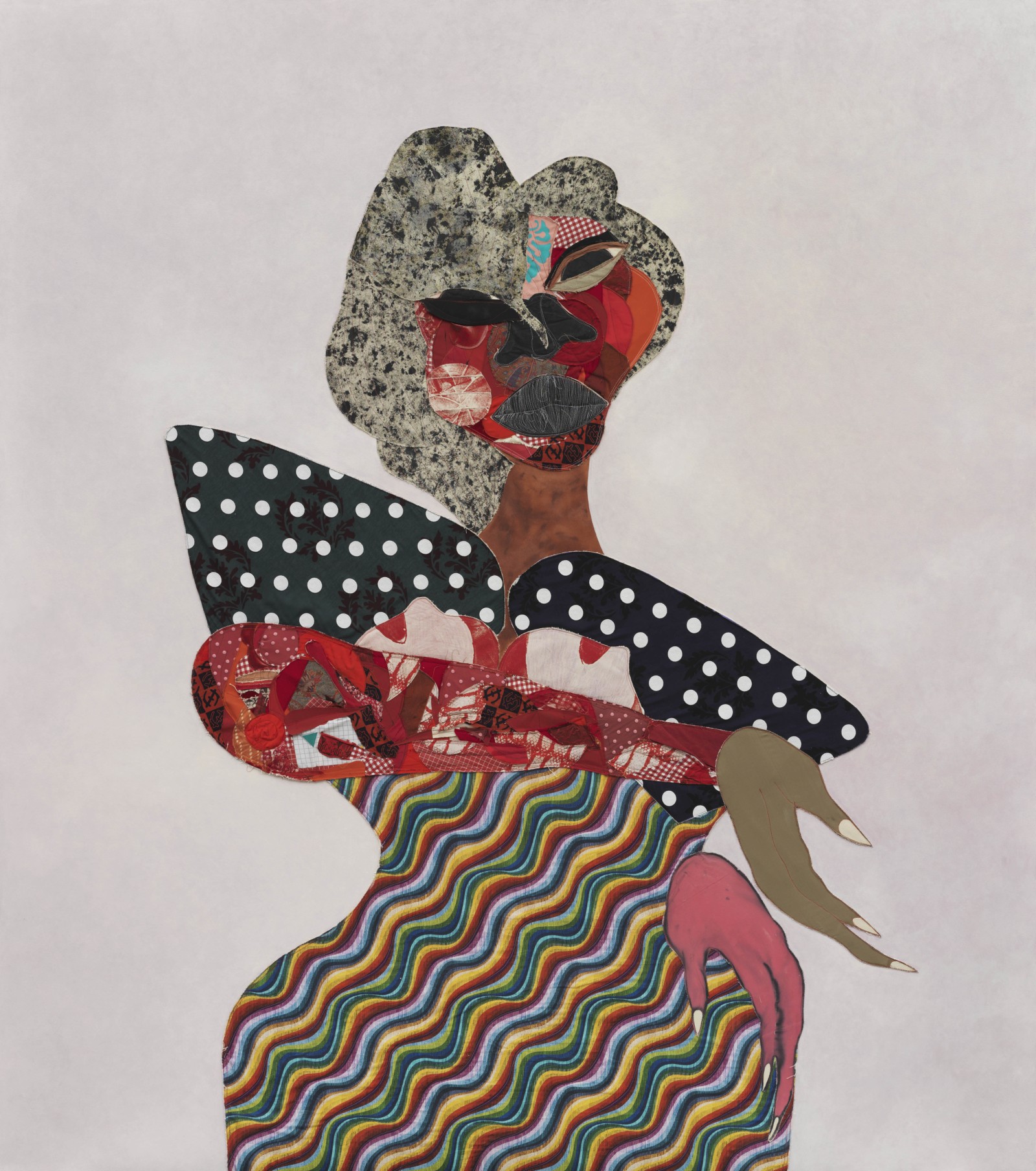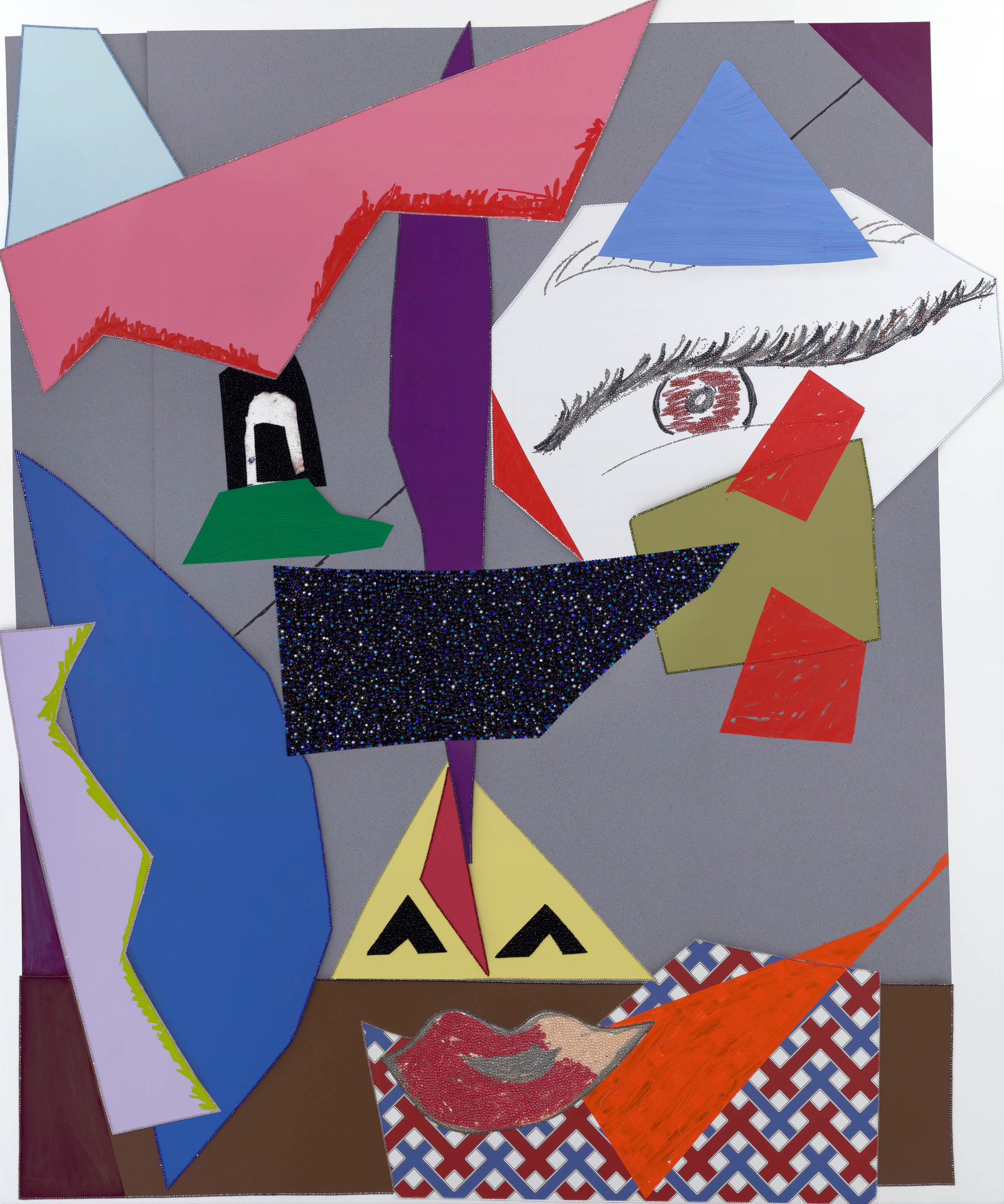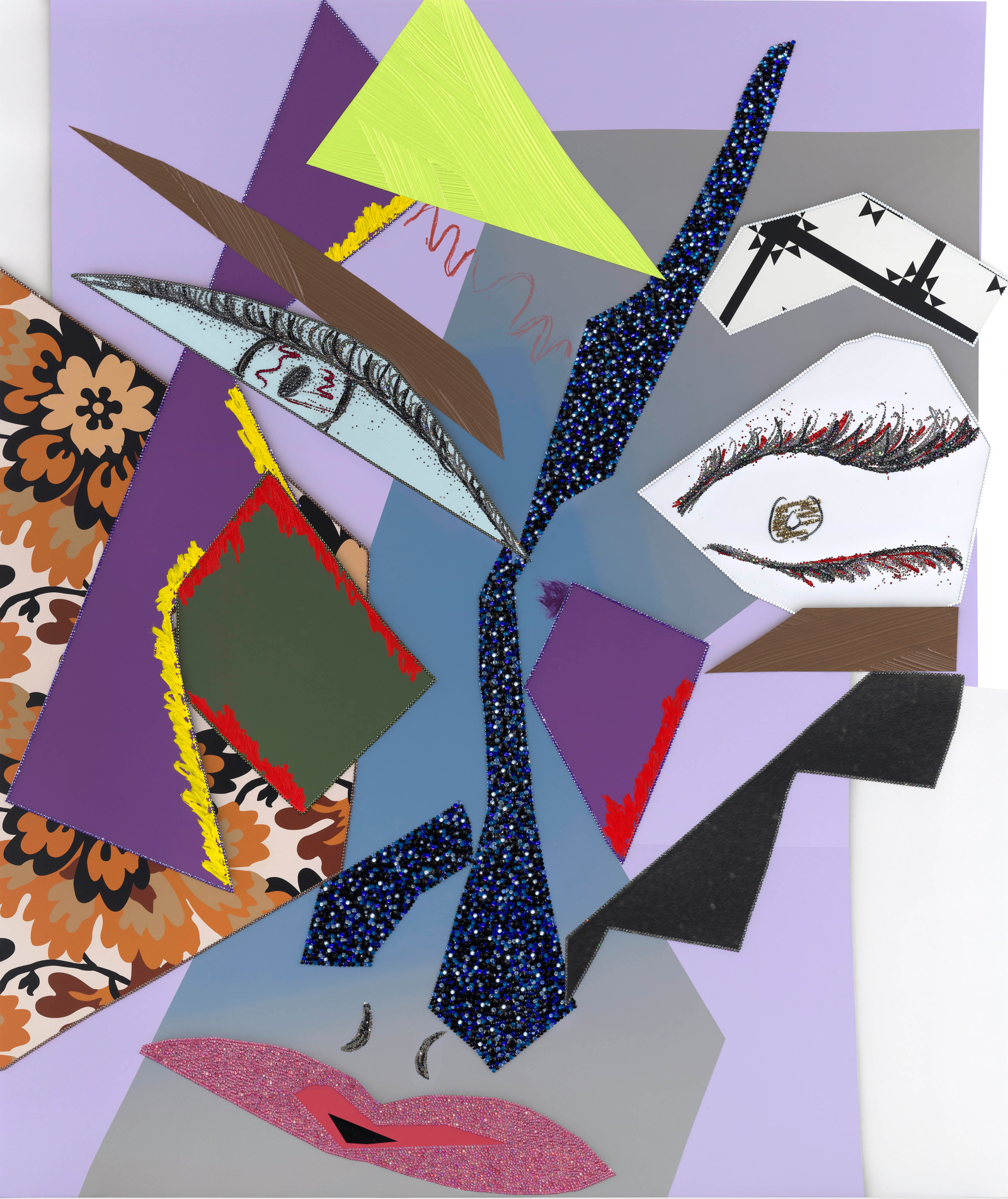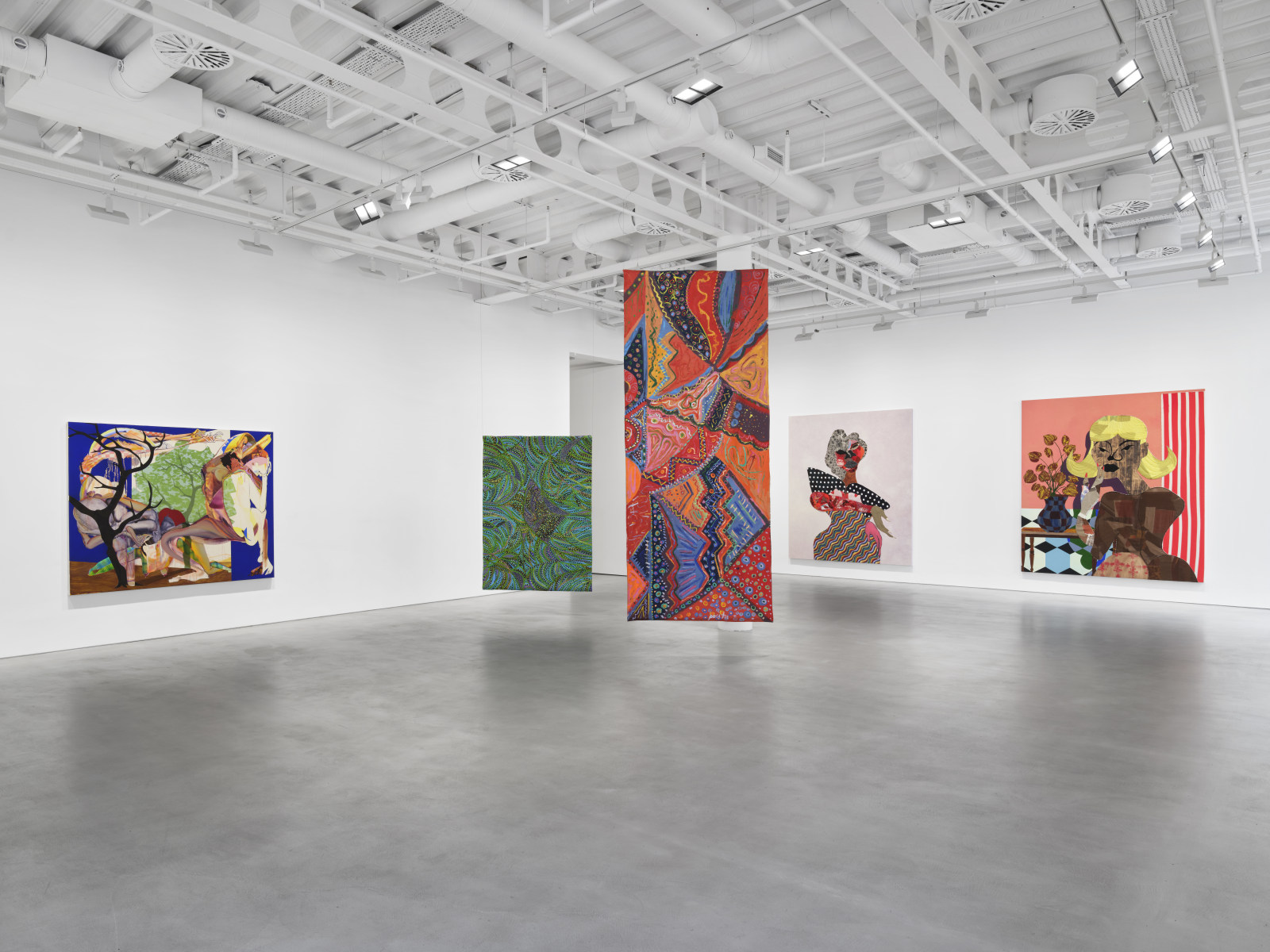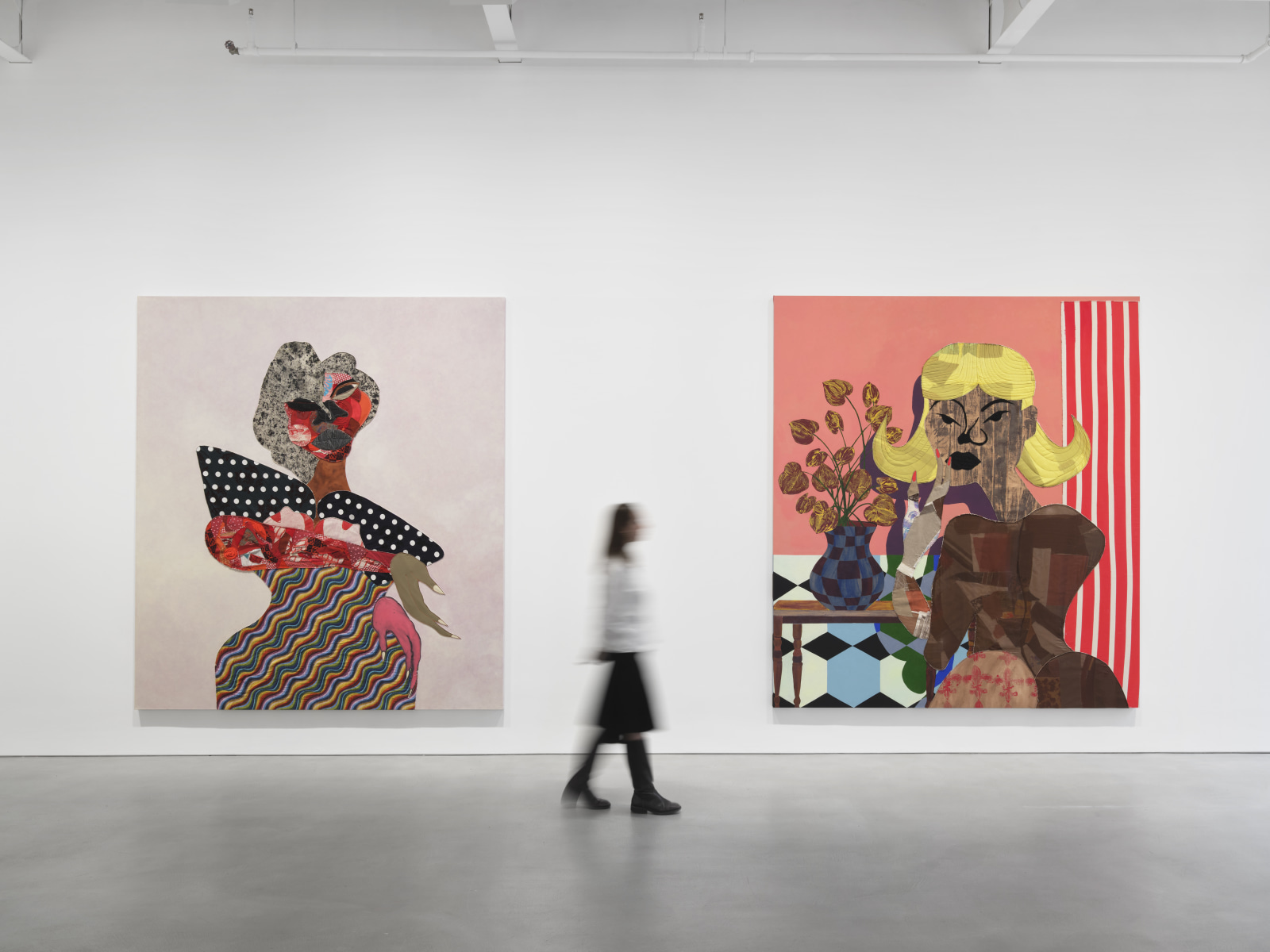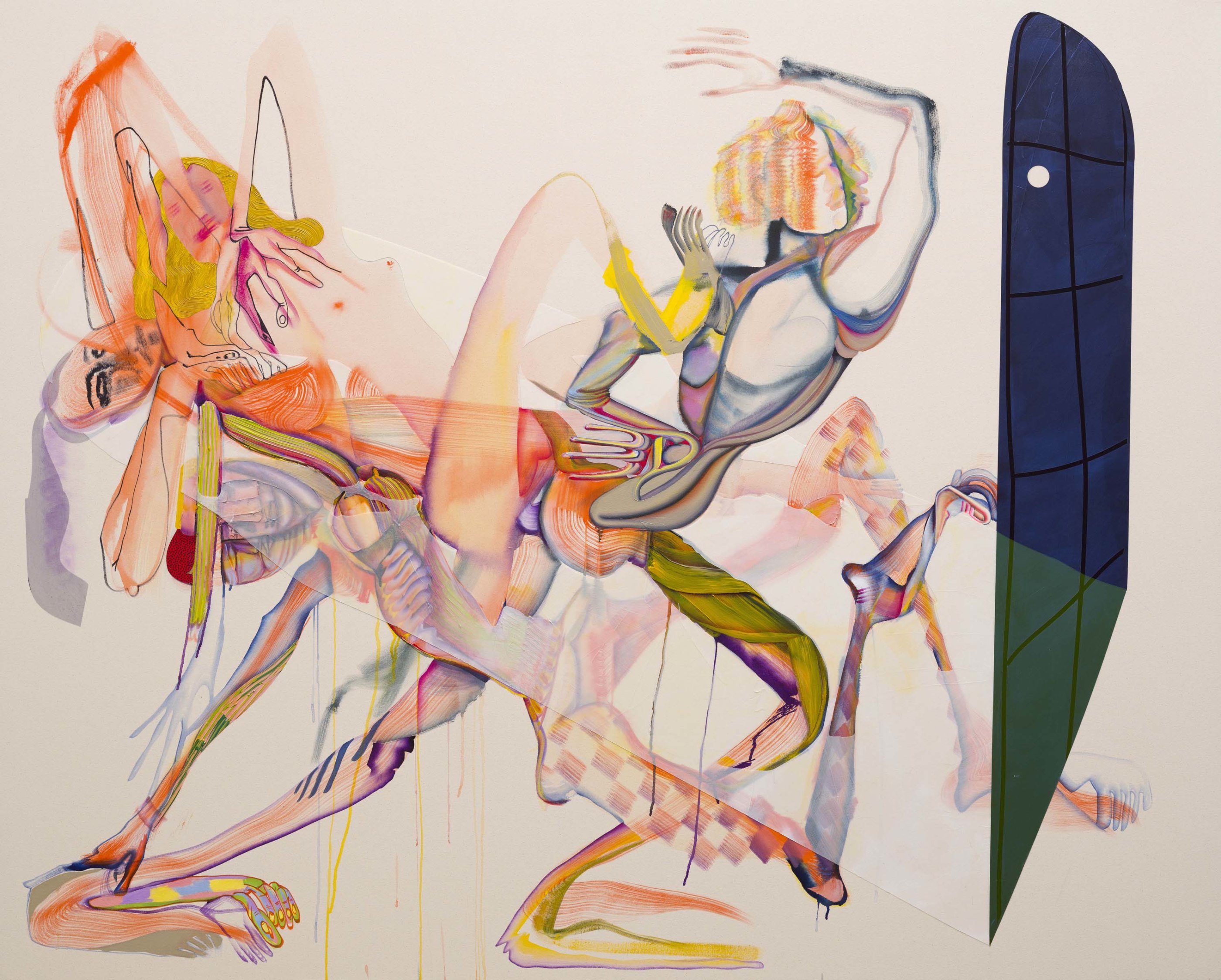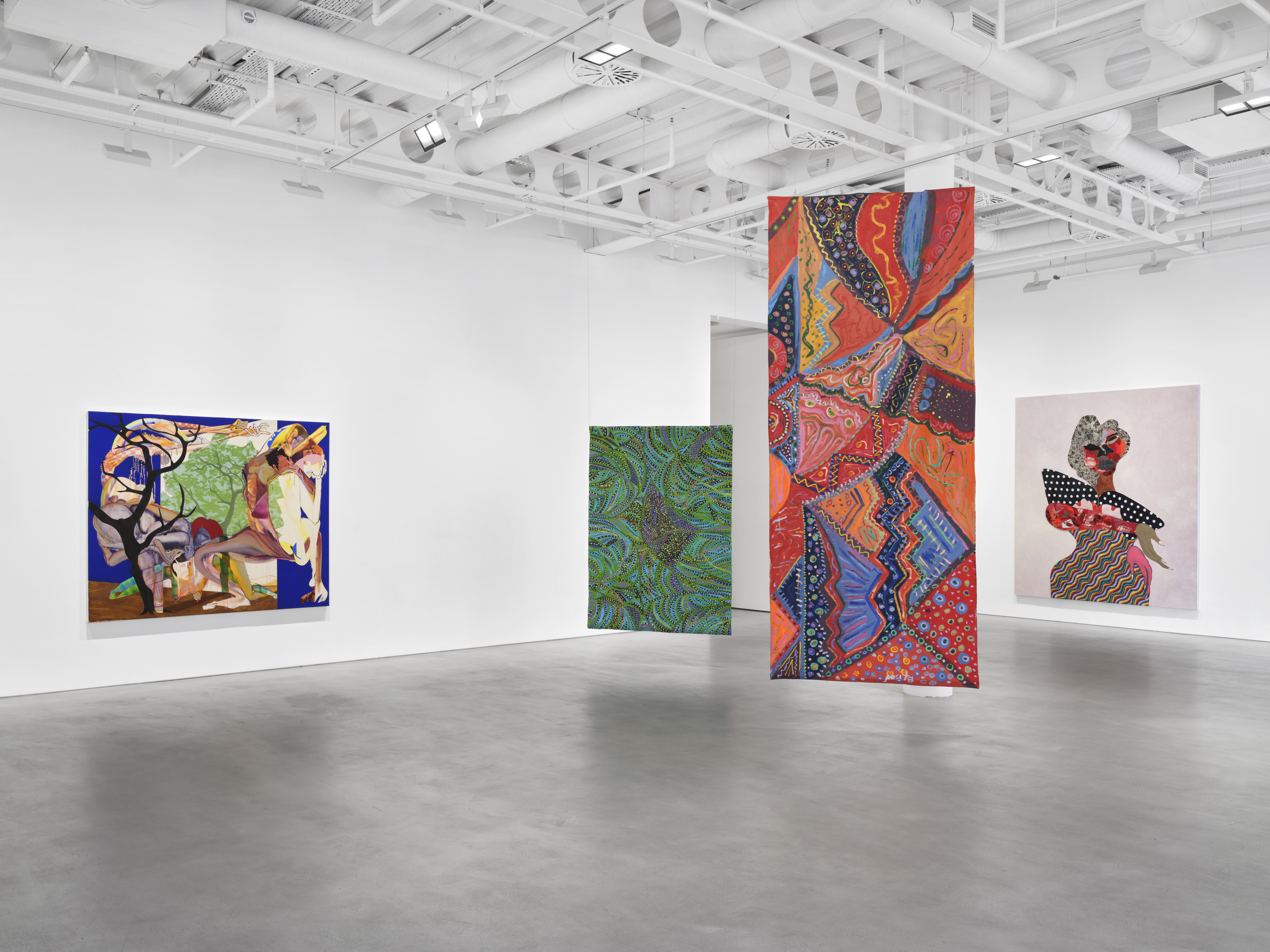


Perpetual Motion Machines
Pilar Corrias presents Perpetual Motion Machines, a group exhibition featuring work by Pacita Abad, Loie Hollowell, Christina Quarles, Tschabalala Self and Mickalene Thomas.
Taking as its starting point the concept that perpetual motion machines create energy indefinitely, this exhibition brings together works that explore the tension between movement and stillness in painting. Painting, though traditionally a still medium, has long sought to capture movement, energy and the fluidity of thought and emotion. Within these new and historical works, there is an extraction and projection of energy that has been distilled to communicate the intricate lives of women. Unique approaches to painterly techniques fuse, playing with pace and impressions of movement.

